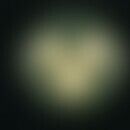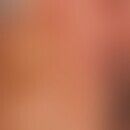HistoryThis section has been translated automatically.
Baughman, 1971
DefinitionThis section has been translated automatically.
CHANDS is the acronym for Curly Hair Ankyloblepharon Nail Dystrophy. The syndrome is associated with an autosomal recessive homozygous mutation in the RIPK4 gene (605706). RIPK4 is located on chromosome 21q22 (Busa T et al. 2017).
Clinical featuresThis section has been translated automatically.
CHAND syndrome is characterized by ankyloblepharon, sparse, curly and woolly hair, nail dysplasia and oral frenula .
Gollasch et al (2015) reported 3 children of consanguineous Kuwitis with ankyloblepharon, sparse, curly and woolly hair(frizzy hair) and hypoplastic nails. Other features included hypertelorism, a flat nasal bridge, bilateral minimal adhesions (synechiae) between the lower and upper lip, and small dimples on the upper lip.
Busa et al (2017) reported a 3-year-old boy who came from consanguineous parents of Tunisian origin and showed ankyloblepharon formation at birth. Furthermore, ureteral dilation was noted as well as nail dysplasia, dry skin, bifid tongue and multiple oral frenula. The deciduous teeth were normal, the hair was curly, woolly and sparse. Motor development was normal.
LiteratureThis section has been translated automatically.
- Busa T et al. (2017) Confirmation that RIPK4 mutations cause not only Bartsocas-Papas syndrome but also CHAND syndrome. Am J Med Genet A 173:3114-3117.
- Gollasch B et al (2015) Identification of a novel mutation in RIPK4 in a kindred with phenotypic features of Bartsocas-Papas and CHAND syndromes. Am J Med Genet A 167A:2555-2562.
Outgoing links (1)
Wooly hair ;Disclaimer
Please ask your physician for a reliable diagnosis. This website is only meant as a reference.



